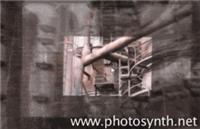The Chinese Snappark lets consumers add pictures to other pictures. Someone can create a topic by using pictures and tags and others can then add pictures to it. It creates a kind of wiki with pictures.
Future vision by Erwin van Lun
People think in images. As soon as they see an image, associations are created in their heads and when it’s easy to gather the pictures, such a system is capable of fast growth. In a next step, this’ll be automatic. For example all pictures of German shepherds together, very concretely, or all images with vertical or horizontal lines, very abstract. In the last example, we might get five people in a row, a picture of bars or of five fingers. Applying that type of creativity can easily be left to computers. In a couple of steps afterwards humor will follow: playing with language, but then we’ll be thirty years further down the line.








